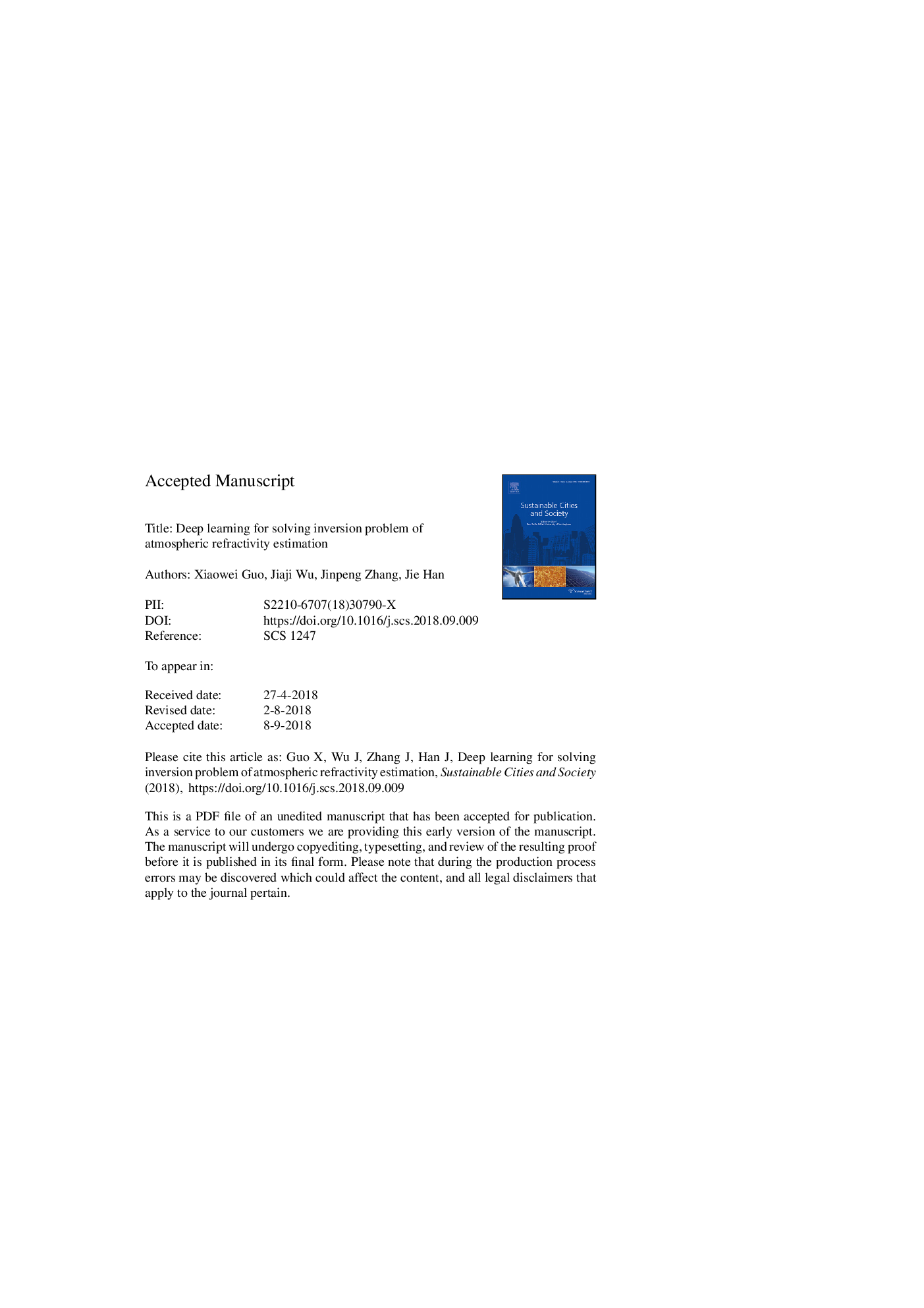| Article ID | Journal | Published Year | Pages | File Type |
|---|---|---|---|---|
| 11032513 | Sustainable Cities and Society | 2018 | 23 Pages |
Abstract
Atmospheric ducts are typical occurrences in marine environments. They can trap electromagnetic waves in ducts layer and extend propagation ranges significantly. Thus, affecting systems such as radar communications. Because the direct measurement of the atmospheric ducts refractivity has a certain degree of difficulty, the radar sea clutter power, which is easily measured, is used to solve the inversion problem of atmospheric refractivity estimation. In this study, based on the refractivity proï¬le of the evaporation duct and the surface based duct, combined with the deep learning, we established a network mapping model between the sea clutter and the refractivity proï¬le parameters. The model is applied to the inversion problem of atmospheric refractivity estimation, and the inversion results are analyzed to verify the feasibility of deep learning in the inversion problem. We herein report the high-precision inversion results of the atmospheric refractivity estimation.
Keywords
Related Topics
Physical Sciences and Engineering
Energy
Renewable Energy, Sustainability and the Environment
Authors
Xiaowei Guo, Jiaji Wu, Jinpeng Zhang, Jie Han,
